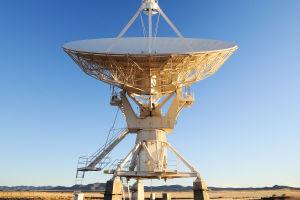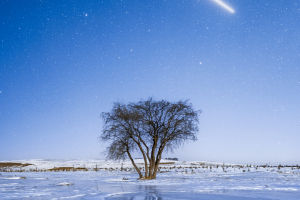When discussing meteor showers, we often find ourselves praising their romantic and mysterious nature.
Meteor showers, as a celestial feast in the universe, attract countless people every year to gaze at the stars, anticipating the miraculous moment.
This article delves into various aspects of meteor showers, from their scientific background and cultural significance to the best practices for observing this natural spectacle.
1. Basic Concept and Formation
Meteor showers occur when dust and debris from comets or asteroids in their orbits interact with Earth's atmosphere.
These particles produce bright streaks of light, known as meteors when they enter the atmosphere at high speeds. The timing of annual meteor showers is typically linked to the orbit of a comet, such as the Perseids associated with Comet Swift-Tuttle.
2. Classification and Characteristics
Meteor showers are classified based on the timing and intensity of their occurrences. For instance, most showers have an "active period" when meteor rates are higher. Additionally, there are unpredictable outbursts like the Leonid meteor storm of 2001.
3. Scientific Significance and Research Value
Meteor showers not only inspire awe but also provide valuable opportunities for astronomers to study cosmic materials. By analyzing meteor spectra and orbits, scientists can learn about conditions and processes during the formation of the solar system, and even explore the composition of cosmic dust.
4. Role in Culture and History
Meteor showers have held special symbolic significance across various cultures since ancient times.
They are often associated with myths and legends, seen as signs from the gods or auspicious omens. Different cultural interpretations of meteor showers reflect humanity's profound awe and curiosity about the cosmos and natural forces.
5. How to Observe Meteor Showers
Optimal viewing conditions are crucial for enjoying the spectacular display of a meteor shower.
Choosing locations away from light pollution, preferably in dark skies, increases the chances of observing meteors successfully. The best viewing times are typically during nighttime and at the peak of meteor activity, such as during the Perseid meteor shower's active period.
6. Global Observation Hotspots
Due to the widespread geographical range of meteor showers, there are unique observation points and specific meteor shower events worldwide.
For example, the Perseid meteor shower viewing spots along the Potomac River in the United States attract numerous stargazers annually, who collectively witness the beauty and grandeur of meteor showers.
7. Conservation and Future Prospects
Efforts to preserve dark skies amid increasing urbanization and light pollution are crucial. Maintaining environments conducive to observation is essential for the long-term enjoyment of meteor showers as natural spectacles.
Moreover, advancements in technology and observational instruments promise deeper and more precise studies of meteor showers and the scientific phenomena behind them in the future.
Through a multidimensional exploration of meteor showers, we gain a deeper understanding of their wonder and magnificence and contemplate humanity's relationship with the cosmos. Each meteor shower is a natural feast reminding us that even in today's highly advanced technological era, our curiosity and reverence for natural phenomena remain boundless.


